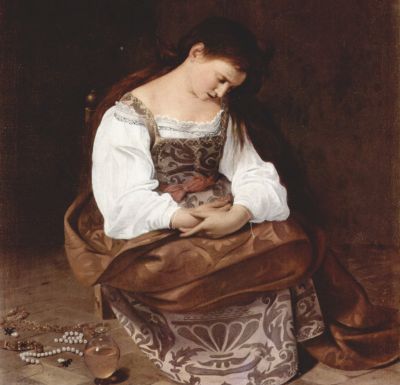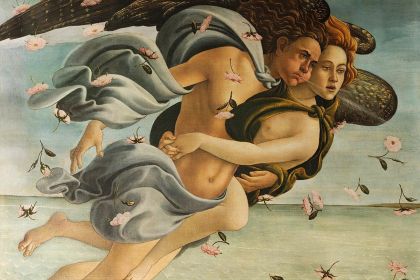Poetry
Lamento de la Ninfa: Monteverdi's song of love, fire and ice

Maria Magdalena by Caravaggio
Lamento de la Ninfa is one of the most famous vocal pieces of Claudio Monteverdi, a leading Italian composer whose work greatly contributed to the emergence of a new musical aesthetic during the transition from the Renaissance to the Baroque era. Written for four voices accompanied by basso continue, the composition represents the madrigal genre which was one of the main forms combining poetry and music in Italy in the early 16th century.
Like many of Monteverdi's songs, Lamento Della Ninfa touches on the themes of love drawing from the verses of Ottavio Rinuccini who was a famous Italian poet and the first-ever opera librettist.
The song is opened by a shepherd’s choir of two lines of tenors and one bass which for three stanzas describes a pale and frustrated girl who has left her house before dawn and is wandering absent-mindedly among the flowers mourning her unhappy love.
Immediately after shepherd’s introduction, a nymph with a soulful soprano asks Amur about the betrayal committed by her beloved who has destroyed the oath of love. In her pleas, she first demands him to end her life, then longs for the return of her beloved, then engages in confused discussions about the fact that the new girl of her hero is perhaps more attractive but does not have the necessary fidelity and tenderness.
The shepherd's choir echoes the dramatic singing of the nymph commenting on her suffering with monotonous phrases like "The poor girl, ah no more, no, can she suffer so much ice." The song closes with a one-stanza moral about the impermanence of love performed by the shepherd's choir.
Listen to Claudio Monteverdi's Lamento de la Ninfa performed by Montserrat Figueras as soprano and Jordi Savall with Hespèrion XX:
It is not known exactly when Monteverdi wrote his music for Lamento de la Ninfa, however the fact that the song appeared in his 1638 Madrigals of War and Love makes it one of the first compositions in the history of music using the so-called Andalusian cadence.
Original lyrics of Lamento de la Ninfa by Ottavio Rinuccini:
Non havea Febo ancora
recato al mondo il dì,
ch’una donzella fuora
del proprio albergo uscì.
Sul pallidetto volto
scorgeasi il suo dolor,
spesso gli venia sciolto
un gran sospir dal cor.
Sì calpestando i fiori
errava or qua, or là,
i suoi perduti amori
così piangendo va:«Amor», dicea, e ’l piè,
mirando il ciel, fermò,
«Dove, dov’è la fe’
che ’l traditor giurò?»
Miserella, ah più no, no,
tanto gel soffrir non può.
«Fa che ritorni il mio
amor com’ei pur fu,
o tu m’ancidi, ch’io
non mi tormenti più.
Non vo’ più ch’ei sospiri
se non lontan da me,
no, no che i martiri
più non darammi affè.
Perché di lui mi struggo,
tutt’orgoglioso sta,
che si, che si se ’l fuggo
ancor mi pregherà?
Se ciglio ha più sereno
colei che ’l mio non è,
già non rinchiude in seno
amor si bella fè.
Né mai sì dolci baci
da quella bocca avrai,
nè più soavi, ah taci,
taci, che troppo il sai.»Sì, tra sdegnosi pianti,
spargea le voci al ciel;
così nei cori amanti
mesce amor fiamma e gel.



